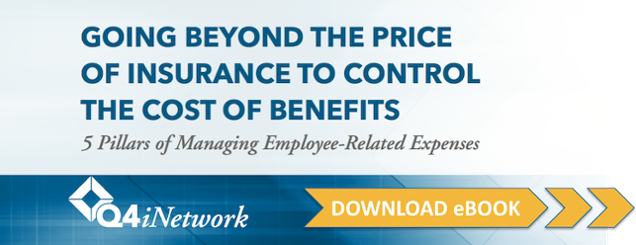There’s a lot of talk about how having a defined purpose is important for your business. And with good reason. To be successful, you need to understand WHY you are in business. And we’re not talking about profitability here. We’re talking about the purpose behind the profit. That thing that inspires you to do your best and deliver your true value. Every single day.
Sometimes, defining these things can get a little tricky. Even if you have a very strong sense of purpose, it might be hard to put it into words. But doing so can be a game changer for your business.
Wondering how to get started? Here’s a handy guide to help you articulate why you are in business.
It’s not about getting rich
Yes, everyone wants to make money. But this is about more than that. You’re looking for your bigger, more inspired purpose.
Start by asking yourself and your team, “What do we do as an organization?” Write it down. And then ask yourselves, “Why is this important?” Write down your answer.
Then, follow that answer with the same question: “Why is this important?” Write down your answer.
Repeat this line of questioning about 5 times. When you find you’re getting to the core idea of your Why, then write the final answer in the form of a sentence that starts with “We believe…”
Here’s an example
Let’s say you’re in the talent management business.
- Why are we in this business? What gets us excited about what we do?
- We love matching great people with great organizations. | Why is it important?
- Because people need good, stable jobs and companies need reliable, talented employees. | Why is that important?
- If people can’t find jobs, they can’t provide for themselves or their families. If companies can’t hire quality employees, they can’t stay in business. And if they can’t stay in business, they can’t provide stable jobs for people who need them. | Why is that important?
- We believe communities thrive when they’re filled with happy employees working at great companies.
When you get to the answer or belief statement that starts explaining your inspired reason for what you’re ultimately trying to achieve with your business, then make a statement explaining it.
We strengthen communities by helping companies meet business objectives through employee attraction and retention.
Or for more flair and enthusiasm, you might say,
We help build thriving communities filled with extraordinary companies that are talent magnets.
Put your own personality to this description in a way that matches your company personality. In a further narrative (a paragraph or two), explain how you accomplish this. Talk about how you find, screen, and match candidates and how this influences the companies you work with. Don’t include this type of detail in your Purpose statement itself, otherwise you could limit the company to doing specific thing. But this will provide some good insight for company decision-making and for new employees to better understand who you are as an organization.
Keep your purpose statement broad and flexible so you can modify specific services and processes as you grow, but know that it keeps you on track with your identified purpose.
Your Why/Purpose drives everything
Once you determine what your statement is going to be, make it your primary filter for everything you say and do as an organization. Question your intentions before taking action by seeing how your decisions and goals align with your purpose.
When faced with a decision, do a gut check – maybe it’s a new service offering, a new partnership, a new marketing opportunity – and ask yourself, “Does this help us strengthen the community and the employers we work with?”
Connect with your team and your customers at a level that challenges and educates them and helps them create a better environment. This will make you clearly attractive to the types of clients who value what you value.
Start by defining your purpose. Once you’ve got it down, live by it. Share it with your employees, your customers, and the world. Then see where it takes you.
Photo by melpomen
![]()



